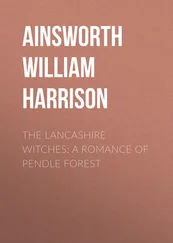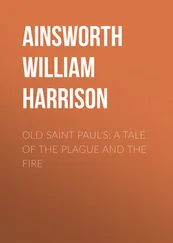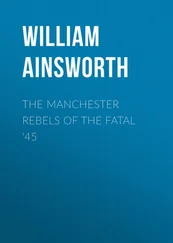William Ainsworth - Preston Fight - or, The Insurrection of 1715
Здесь есть возможность читать онлайн «William Ainsworth - Preston Fight - or, The Insurrection of 1715» — ознакомительный отрывок электронной книги совершенно бесплатно, а после прочтения отрывка купить полную версию. В некоторых случаях можно слушать аудио, скачать через торрент в формате fb2 и присутствует краткое содержание. ISBN: , Жанр: foreign_prose, на английском языке. Описание произведения, (предисловие) а так же отзывы посетителей доступны на портале библиотеки ЛибКат.
- Название:Preston Fight: or, The Insurrection of 1715
- Автор:
- Жанр:
- Год:неизвестен
- ISBN:http://www.gutenberg.org/ebooks/49851
- Рейтинг книги:4 / 5. Голосов: 1
-
Избранное:Добавить в избранное
- Отзывы:
-
Ваша оценка:
- 80
- 1
- 2
- 3
- 4
- 5
Preston Fight: or, The Insurrection of 1715: краткое содержание, описание и аннотация
Предлагаем к чтению аннотацию, описание, краткое содержание или предисловие (зависит от того, что написал сам автор книги «Preston Fight: or, The Insurrection of 1715»). Если вы не нашли необходимую информацию о книге — напишите в комментариях, мы постараемся отыскать её.
Preston Fight: or, The Insurrection of 1715 — читать онлайн ознакомительный отрывок
Ниже представлен текст книги, разбитый по страницам. Система сохранения места последней прочитанной страницы, позволяет с удобством читать онлайн бесплатно книгу «Preston Fight: or, The Insurrection of 1715», без необходимости каждый раз заново искать на чём Вы остановились. Поставьте закладку, и сможете в любой момент перейти на страницу, на которой закончили чтение.
Интервал:
Закладка:
William Harrison Ainsworth
Preston Fight; or, The Insurrection of 1715
The details of Preston Fight, given in the tale, which I have the gratification of inscribing to your name, may be new to you; inasmuch as you may not have seen DOCTOR Hibbert Ware’s very curious historical collections relative to the great Jacobite movement of 1715, published several years ago by the Chetham Society, from which my materials have been derived.
But I am sure you will share my feelings of sympathy with the many gallant Roman Catholic gentlemen, who, from mistaken feelings of loyalty, threw away life and fortune at Preston; and you cannot fail to be struck with admiration at the masterly defence of the town made by Brigadier Mackintosh – the real hero of Preston Fight.
I hope I may have succeeded in giving you some idea of that valorous Highland commander.
Nothing can be better than the description of him given in the old Lancashire ballad:
“Mackintosh is a soldier brave,
And of his friends he took his leave;
Unto Northumberland he drew,
And marched along with a jovial crew.”
What a contrast to the brave brigadier is General Forster, by whose incompetency, or treachery, Preston was lost! – as the same old ballad says:
“‘Thou Forster hast brought us from our own home,
Leaving our estates for others to come;
Thou treacherous dog, thou hast us betrayed,’
My Lord Derwentwater thus fiercely said.”
But the hero of my tale is the ill-fated Earl of Derwentwater – by far the most striking figure in the Northumbrian insurrection.
The portrait I have given of him I believe to be in the main correct, though coloured for the purposes of the story. Young, handsome, chivalrous, wealthy, Lord Derwentwater was loyal and devoted to him whom he believed his rightful and lawful sovereign.
His death was consistent with his life. On the scaffold he declared, “I intended wrong to none, but to serve my king and country, and without self-interest, hoping by the example I gave to induce others to do their duty.”
“My Lord Derwentwater he is dead,
And from his body they took his head;
But Mackintosh and the rest are fled
To fit his hat on another man’s head.”
Lord Derwentwater was strongly attached to his ancestral mansion, and deeply mourned by his tenants and retainers. In the “Farewell to Dilston,” by Surtees, he is made to say:
“Farewell to pleasant Dilston Hall.
My father’s ancient seat;
A stranger now must call thee his,
Which gars my heart to greet.
“Albeit that here in London Tower,
It is my fate to die,
O, carry me to Northumberland,
In my father’s grave to lie.”
How few who visit Greenwich Hospital are aware that that noble institution, of which the country is so justly proud, has derived, for upwards of a century and a half, the immense revenue of six thousand a year from the ill-fated earl’s forfeited estates!
Has not this effaced the treason?
I commend his story to you.
Your affectionate cousin,
W. Harrison Ainsworth.
Little Rockley, Hurstfierpoint,
May 19, 1875.
BOOK THE FIRST – THE EARL OF DERWENTWATER
I. – DILSTON CASTLE
A SPLENDID place was Dilston Castle in Northumberland, the seat of the young Earl of Dervventwater, in the early part of the last century.
Crowning an eminence, overlooking a most picturesque district, approached by a long avenue of chestnut trees, and surrounded by woods, extending to the banks of the Tyne, the mansion formed a conspicuous object from whichever side it might be viewed.
Dilston Castle could not boast antiquity, having only been built some sixty years prior to the date of our story, by Sir James Radclyffe, subsequently created Earl of Derwentwater by James the Second, but it occupied the site of an old Border fortress, called Devilstone – since modified to Dilston – that had often resisted the incursions of the Scots.
Of this stronghold, which dated back to the time of Henry the First, only a single memorial was left, in the shape of a grey stone tower – all the rest having been demolished.
The mansion formed a square, and enclosed a spacious court with a fountain in the centre. The principal entrance, approached by a large person, was inside the court, and faced a grand gateway, that terminated the chestnut avenue.
Close by, though screened by trees, was a little chapel, wherein the rites of Rome were performed – the Radclyffes being strict adherents to the old religion. Hereabouts, also, stood the grey stone tower, before alluded to, and some chambers within it were still used.
As may be supposed, from its size, the mansion contained some magnificent apartments, and these were sumptuously furnished. Large gardens, laid out in the formal French style, and ornamented with terraces, flights of stone steps, statues, and fountains, added to the attractions of the place.
Beneath the acclivity, whereon stood the castle, was a romantic and beautiful dell, the sides of which were clothed with brushwood. Through the midst of the ravine rushed a stream, called the Devil’s Water – bright and clear, despite its name – that hurried on, unless checked by a huge rock, or some other impediment, when it spread out into a pool. In places, the glen had a weird look, and many strange legends were connected with it.
The picturesque beauty of the spot was materially heightened by a lofty bridge flung across the hollow, and leading from the castle to the deer-park.
From this bridge, the stately structure, with the charming and diversified scenery around it, could be contemplated to the greatest advantage.
The park boasted many ancient oaks and ash-trees, and was well stocked with deer; the neighbouring moors abounded with grouse, the smaller streams with trout, and the Tyne with salmon. Better shooting and fishing could not be had than at Dilston.
The noble owner of this proud mansion, and the extensive domains attached to it, had succeeded to the title and estates on the death of his father, the second earl, some five years previously. In addition to Dilston, Langley Castle, and Simonburn in Northumberland he had large estates in Cumberland, and one side of the lovely lake of Dervventwater, from which he derived his title, belonged to him. Moreover, he had lead mines at Alston Moor that produced a very large revenue.
Notwithstanding his immense wealth and importance in the county, the young earl led a very retired life. As a Roman Catholic, he laboured under disabilities that prevented him from taking part in public affairs. But he maintained a numerous establishment, and was extremely hospitable, and his chaplain and almoner, Father Norham, distributed a tithe of his large income in charity.
Loyal to the sovereign he recognised, firm in the faith he professed, devout, charitable, courteous, courageous – such was the Earl of Derwentwater at twenty-two, when we first meet him.
The young earl’s personal appearance was extremely prepossessing. Tall, and well-proportioned, he had finely-formed features, with blue eyes and fair locks. He was fond of all manly exercises, a daring horseman, a master of fence, and a good shot. Several important alliances had been proposed to him, but he was still unmarried.
Charles Radclyffe, his only brother, and his junior by a year and a half, resided with him at Dilston. There was a great personal resemblance between them. Like his brother, Charles Radclyffe was an enthusiastic Jacobite, and ready to run any risk for the restoration of the Stuarts.
Читать дальшеИнтервал:
Закладка:
Похожие книги на «Preston Fight: or, The Insurrection of 1715»
Представляем Вашему вниманию похожие книги на «Preston Fight: or, The Insurrection of 1715» списком для выбора. Мы отобрали схожую по названию и смыслу литературу в надежде предоставить читателям больше вариантов отыскать новые, интересные, ещё непрочитанные произведения.
Обсуждение, отзывы о книге «Preston Fight: or, The Insurrection of 1715» и просто собственные мнения читателей. Оставьте ваши комментарии, напишите, что Вы думаете о произведении, его смысле или главных героях. Укажите что конкретно понравилось, а что нет, и почему Вы так считаете.












